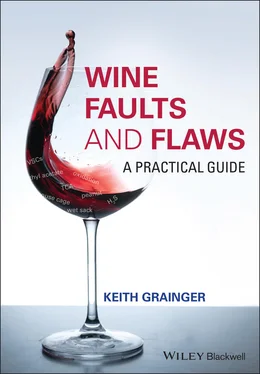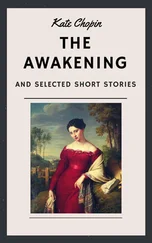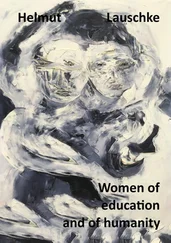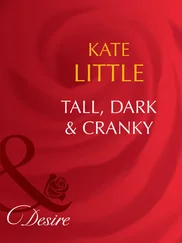Keith Grainger - Wine Faults and Flaws
Здесь есть возможность читать онлайн «Keith Grainger - Wine Faults and Flaws» — ознакомительный отрывок электронной книги совершенно бесплатно, а после прочтения отрывка купить полную версию. В некоторых случаях можно слушать аудио, скачать через торрент в формате fb2 и присутствует краткое содержание. Жанр: unrecognised, на английском языке. Описание произведения, (предисловие) а так же отзывы посетителей доступны на портале библиотеки ЛибКат.
- Название:Wine Faults and Flaws
- Автор:
- Жанр:
- Год:неизвестен
- ISBN:нет данных
- Рейтинг книги:4 / 5. Голосов: 1
-
Избранное:Добавить в избранное
- Отзывы:
-
Ваша оценка:
- 80
- 1
- 2
- 3
- 4
- 5
Wine Faults and Flaws: краткое содержание, описание и аннотация
Предлагаем к чтению аннотацию, описание, краткое содержание или предисловие (зависит от того, что написал сам автор книги «Wine Faults and Flaws»). Если вы не нашли необходимую информацию о книге — напишите в комментариях, мы постараемся отыскать её.
FLAWS
Wine Faults and Flaws: A Practical Guide
An essential guide to the faults and flaws that can affect wine
Wine Faults and Flaws — читать онлайн ознакомительный отрывок
Ниже представлен текст книги, разбитый по страницам. Система сохранения места последней прочитанной страницы, позволяет с удобством читать онлайн бесплатно книгу «Wine Faults and Flaws», без необходимости каждый раз заново искать на чём Вы остановились. Поставьте закладку, и сможете в любой момент перейти на страницу, на которой закончили чтение.
Интервал:
Закладка:
The clarity of wine may vary from clear to hazy , and the brightness from bright to dull . Dullness may well indicate a tired or faulty wine. Wines from the New World often appear brighter than those from Europe. Wines that have high acidity, particularly if tartaric acid has been added in the winemaking process, may appear to be especially bright. On occasions, such brilliance might be an early indicator of excessive acidity, but the taster is cautioned against drawing such a conclusion at this early stage. A young wine that appears dull probably has a high pH (low acidity), which is generally indicative of poor quality and total lack of ageing potential. As wines mature, they lose brightness, and with over‐maturity, they become dull. Dullness may be one of the first indicators of oxidation.
2.5.3 Intensity
The intensity, i.e. the depth of colour, should be noted. As well as holding the glass at a 30° angle as discussed, the depth of colour can be observed by looking directly down into the wine in the glass that is standing on a white background, as illustrated in Figure 2.3.

Figure 2.3 Looking down to see depth of colour.
The intensity of wine can range from very pale to very deep . When writing a note, several steps between these extremes that might be detailed, e.g. medium‐deep. For novice tasters, it is perhaps useful to know that examining a standard tasting sample (3–4 cl) of a red wine, by holding the glass at 30° over a sheet of white paper containing printed type and the print is clearly visible, the wine may be described as pale or medium‐pale. If the print cannot be seen, then deep or very deep might be the appropriate descriptors.
Very often, wines that are pale in intensity will be lighter in flavours and body than those that are deep, but this is not always the case, and sometimes pale wines can often be overtly aromatic. Whites that have had extensive barrel ageing will have a greater visual intensity, although red wines may lose intensity after a long period in barrel. Some red grape varieties such as Merlot and Syrah (also known as Shiraz) can produce deep‐coloured wines, especially when from a hot climate, or made with small berries which have a high skin to pulp ratio, or low yielding vines. Conversely, several red grape varieties, including Pinot Noir and, to a lesser extent, Nebbiolo produce wines that are usually not deep‐coloured. However, there are some notable exceptions to this, e.g. some Pinot Noirs from New Zealand's Central Otago region. The extraction techniques used, and particularly pre‐fermentation maceration (cold soaking) if undertaken, impact upon the colour intensity. However, paleness in red wine, especially a young wine, is often indicative of a lack of concentration, which might be the consequence of many various factors such as a difficult growing season or inadequate extraction. Full‐bodied and concentrated reds, especially those from hot climates, will be deep or opaque in youth, and this suggests intense flavours and may be indicative of good quality. The colour intensity of red wines decreases with maturity, but the opposite is the case with aged whites. However, occasionally extremely deep‐coloured red wines can be surprisingly lacking in flavours. There are a few red varieties that have coloured flesh as well as black skins (e.g. Alicante Bouschet) but are surprisingly lightly flavoured. These teinturier grapes may, very occasionally, be used in a blend to deepen the colour of a wine that might be perceived as too pale.
Further, intense colours can sometimes indicate winemaking methods that have focused on colour, rather than flavour, extraction. Mindful of the association in the eyes of drinkers (and critics) of deep red wines and perceived high‐quality, winemakers can manipulate intensity, for example, by the addition of 8000 color or Mega Purple , concentrates made from grape skins and seeds. Thus, the taster is cautioned against drawing conclusions as to style or quality at this stage. However, a red wine that is paler than expected or white wine deeper than expected may be suffering from oxidation, which will be further evidenced by the colour, nose, and palate.
2.5.4 Colour
Many factors affect the actual colour of a wine, as well as its intensity. These include the climate and region of production, grape ripeness, the grape variety or blend of varieties, vinification techniques including any barrel ageing, and the wine's state of maturity.
2.5.4.1 White Wines
White wines can vary in colour from almost water clear to deep gold or even amber . Words used to describe colour might also include green , lemon , straw, and (almost always a signal of alarm) brown . Some white varieties such as Sauvignon Blanc generally produce wines at the green‐lemon end of the colour range. In contrast, others such as Gewürztraminer (which has a more heavily pigmented skin) usually give straw or gold colours. Whites from cooler climates often appear lemon‐green or lemon, and those from warmer areas may veer towards gold. Sweet wines such as Sauternes are usually gold, even in youth, and will deepen, perhaps even to copper with age. The colour of all whites will darken with time. The rate at which this takes place varies considerably depending on several factors, particularly pH and acidity (higher acidity slows down the process) and how well the bottle has been stored. Brown colours are certainly a warning sign of faults, either lightstrike or severe oxidation. Lightstrike, discussed in Chapter 6, is most likely in white wines that have been bottled in clear glass or pale glass and exposed to ultra‐violet light sources.
Of course, the taster will be aware that many wines made from white grapes are deliberately oxidised during the production process, e.g. Amontillado and Oloroso Sherries, and the tuilé and rancio wines from Rivesaltes in the Roussillon region of France. Oxidation, as a fault, is discussed in Chapter 5.
2.5.4.2 Rosé Wines
Of all wine types, rosé is the category that is made for visual appeal. Winemakers and marketing departments know that an attractive appearance is crucial to the drinker's perceptions of style and quality. The colour of rosé wines depends on several factors, particularly the production techniques, e.g. whether the colour is the result of skin contact in the press, a short maceration in the tank, or if the wine has been made by the saignée method. This technique involves draining juice from a vat of fermenting crushed red grapes before heavy colour extraction, perhaps after 6–24 hours or so. If the vat is bled after six hours the colour will usually be pale, whilst 24 hours will give a deeper coloured rosé, but the actual colour and intensity will depend on many factors, including climatic conditions and grape variety. There is a very wide range of possible colours and intensities for rosé wines from onion‐skin to pink or even orange . Any orange or brown tints should be regarded as a danger sign, indicating oxidation which even in its early stages will result in a loss of fruit, and bitterness on the palate.
2.5.4.3 Red Wines
Red wines can vary in colour from purple through ruby to mahogany . Purple is indicative of a young red wine, some being so intensely coloured that they appear almost to be blue‐purple. As the wine begins to age, the purple tones lighten to ruby, with further ageing to a warm brick red colour, and with full maturity possibly to garnet or even tawny. We may consider the colour of red wine on a scale that runs from purple , through ruby and garnet , to tawny . Red wines that have undergone lengthy barrel ageing, in which controlled oxygenation has been taking place, change colour and also lighten in intensity faster than those bottled early and aged in bottle. A good illustration of this is the contrast between a Vintage Port (not Late‐Bottled Vintage – LBV) of about 12 years old, following two years or so in vat, aged in bottle for 10 years and a 10‐Year‐Old Tawny Port, which has been matured in pipe (cask) and bottled when ready for drinking. This contrast is illustrated in Figure 2.4.
Читать дальшеИнтервал:
Закладка:
Похожие книги на «Wine Faults and Flaws»
Представляем Вашему вниманию похожие книги на «Wine Faults and Flaws» списком для выбора. Мы отобрали схожую по названию и смыслу литературу в надежде предоставить читателям больше вариантов отыскать новые, интересные, ещё непрочитанные произведения.
Обсуждение, отзывы о книге «Wine Faults and Flaws» и просто собственные мнения читателей. Оставьте ваши комментарии, напишите, что Вы думаете о произведении, его смысле или главных героях. Укажите что конкретно понравилось, а что нет, и почему Вы так считаете.












